Not so deep into Bentley’s website, just a few clicks through virtual pages where glossy people drive opulent cars in gilded vistas, there is a description of the new Mulsanne Speed.
“This,” Bentley says, “is a car for independent thinkers. For those with the unquenchable desire to take the wheel and change the world, there is no more accomplished combination of performance, luxury and style.”
Independent thinkers, eh? Changing the world, in fact? Oh, really? Pan that mental film reel in your head to the innocuous-looking white car here.
The Tesla Model S is the vehicular equivalent of man’s footprint on the moon: a luxury saloon that makes electric propulsion desirable and feasible to a huge audience, thanks to a claimed range of 305 miles, a reasonable price and all the smug feel-good factor (if not more) that you get with conventional diesel alternatives from BMW, Audi et al.
Not only that but, in the devastatingly rapid 682bhp four-wheel-drive P85D model we have here, it’s also got the sort of performance that – even today – seems remarkable.
So let’s get something straight. These two cars count as luxury performance saloons in the same way that Hampton Court Palace and The Shard are both buildings of architectural interest.
The Bentley Mulsanne Speed is a prime piece of gentrified chic that wears its appeal brazenly in the badge on its lofty bonnet, through the splendid mutter from its updated 6.75-litre, 530bhp twin-turbo V8 and via the silkiness of its hide and the general presence it exudes like a forcefield.
At £252,000 (not including the breathtaking £55,400 worth of options fitted to our car), its ‘proper’ competition includes a Rolls-Royce Phantom, or use of a private helicopter – and that’s about it.
Perhaps most crucially with this top-end version of Bentley’s grandest model, there’s also the question of whether it can live up to its billing as a Mulsanne that you want drive rather than sit in the back of in order to be driven.
Even so, the Tesla poses an interesting if abstract contrast. Can a £79,900 car (after the government’s £5000 plug-in car grant) really show up the opulent Mulsanne Speed? Does it really feel £177,100 cheaper? It’s certainly not slower. In fact, the Tesla makes the Bentley’s ‘Speed’ moniker seem somewhat ironic, given that the Mulsanne reaches 62mph in 4.9sec, while the Tesla will do it in a supercar-worrying 3.1sec.
I start the day off in the Tesla, drifting down familiar roads in the New Forest in eerie silence, pondering what the shortfalls of this car really are. Turns out that we’ll stumble on the most obvious later in the day, but in this sunny moment I feel like I’m probably just as happy with my mode of transport as are those sickeningly smug people paraded on Bentley’s website.
Sure, the Model S’s interior is a bit drab in places. Most notably, the old Mercedes-Benz stalks and the finish on the steering wheel aren’t quite what you’d want of an £80k car, while the electrically powered driver’s seat should drop a bit lower. But who really cares when you’ve got a car with all the futuristic appeal of R2-D2 riding a hoverboard? You don’t even have to press a Start button; just pull the automatically extending door handles, step in and go.
Trust me, there’s a weirdly thrilling satisfaction to that – like you’re much too important to have time for crankshafts and oil pumps and other such archaisms.
So just when you’re brimming with joy at the ingenuity of humanity and the fact that there is clearly plenty of life after the petrol pump for us enthusiasts, you find a button marked ‘Acceleration: insane’. All thoughts of saving the planet evaporate.
I do not exaggerate: simply flooring it in a P85D has got to be one of the most extraordinary experiences in modern transport – and our car didn’t even have the just-announced ‘Ludicrous’ mode, which drops the 0-60mph time to 2.8sec.
Digital acceleration is notable for its apparent lack of fluster anyway, but on this scale it’s truly unsettling. There’s no tyre slip. No drama. No complicated launch mode. No pause for gearchanges. No noise other than your own involuntary swearing. Just stand on the correct pedal and in the next heartbeat you’re doing 40mph and up as your diaphragm tries to untangle itself from your spine.
I’d defy anyone not to make a noise when experiencing a standing start in a Tesla. It seems to be an involuntary response necessary to help your brain cope with what the hell just happened.
This is all achieved by seemingly quite simple technology. A big electric motor at the back sends 464bhp to the rear wheels, while a smaller electric motor at the front puts out 218bhp and powers the front wheels. A mattress of lithium ion batteries sits beneath the floor, leaving room for sizeable boots at the front and back and loads of passenger space. You also get hundreds of miles of range.
Yet the Bentley has a character all of its own. Slide into the diamond-stitched embossed seats and take in the immaculately appointed confection that is the interior and it feels as if there’s a six-figure difference in value right there. Someone has clearly lavished varnish on the wood for days on end, probably with a brush made of unicorn hair, and the leather smells of sweet, sweet success.
In the same way that the Tesla transports you to a future ruled by instant everything, the Bentley makes you want to buy a smoking jacket and a gun dog and go and live somewhere stone-built and untouched by the relentless creep of technology.
Of course, I may be doing the Bentley a disservice by suggesting that it’s backward-looking. It has an effective, modern-feeling sat-nav and audio system, and if you sit in the back, where there’s enough open floor space to iron your slacks if you want, you will find iPad holders. Wooden-clad, electronically extending iPad holders, no less, that prop your tablet up just so and keep it charged.
Details such as these make the Bentley feel so special: the soft-close action on the door to the chilled champagne cabinet; the embroidered leather case for the warning triangle; the specific ‘B’ setting on the standard variable driving modes, so you know that this is how Bentley’s own engineers would have the standard air suspension, steering and gearbox tune.
For all that, we’re most keen on sampling Sport mode, since this is the one tuned specifically for the Speed. While the other settings are unchanged from the normal Mulsanne, Sport brings damper and steering settings that are unique to the Speed. It’s this, and the extra power and torque – 530bhp and 811lb ft to the regular car’s 506bhp and 752lb ft – that set the Speed apart.
Set off with gusto, though, and it doesn’t feel dramatically different from the standard Mulsanne. It has the same overall sense that it’s progressing by pounding the road into submission, delivering wonderfully enjoyable but generally heavy-handed responses.
Turn in and, regardless of the firmer set-up, you’re keenly aware of the weight, as all 2.7 tonnes lean over onto the outside wheel, promptly surrendering the car into easily manageable but quite copious amounts of understeer. Of course, if you have the guts and the space, you can poke the twin-turbo V8 motor and get the back end to step out, but that would be frankly vulgar – like seeing the Queen in denim.
Still, the Mulsanne is a joy to drive. In moderately vigorous use there’s satisfaction to be had in sweeping through bends and generally revelling in the grandeur. It’s a lovely engine, and the eight-speed automatic transmission – also tuned specifically for the Speed’s monstrous level of torque – does a good job of shuffling the ratios to make sure that you’re always best placed to take advantage of an ocean of thrust.
It even rides with suitable aplomb, particularly at sedate speeds, when it sighs over broken roads and leaves you mostly oblivious to surface patina. Higher speeds result in more noticeable thumps and shivers at times, while awkward cambers can tug at the steering wheel. Essentially, though, piloting the Mulsanne is a delight – albeit not a particularly sporting one.
The Tesla is also not the most sporting of performance saloons. Even after stepping out of the endearingly portly Bentley, the Model S doesn’t feel nimble. Swing it into a bend and, while it stays flatter and much more neutral through your chosen line than the Mulsanne, there’s still plenty of body roll, while the steering lacks the feedback you get in the Bentley’s light but precise and delightfully oily-feeling hydraulic rack.
Ultimately, for all its extraordinary accelerative potential, the P85D is most at home in sprightly six-tenths driving, where it feels cohesive, predictable and satisfying despite its hefty bulk and shortage of feedback through the controls.
Predictably, the Tesla doesn’t ride with the same high-calibre waft as the Bentley, but it’s not at all bad. Our car is fitted with £2100 worth of air suspension, which, over Hampshire’s undulating, pony-lined roads, allows quite a bit of body float but also keep things neat over all but the occasionally thumping mid-corner rut – which isn’t bad for a car on (also optional) 21in wheels.
The next destination is Portsmouth. It’ll be a quick 20-mile strop in the Bentley, at the cost of a few litres of petrol, but the Tesla is showing only 80 miles’ range remaining, and I still have to get 70 miles back up the M3 after that. Not to mention that if I do get home and plug the car into my standard domestic socket, it will take around 30 hours or more to fully charge from flat.
This is not the car’s fault. It was showing 160 miles’ range when I left home for the New Forest and was then subjected to hours of the kind of stop-start driving that’s about as draining for an electric car’s batteries as it can get.
No problem. A quick glance at Google Maps on the Tesla’s spectacular 17.0in screen shows that Farnham Council has a rapid charger. Sure enough, we roll up to the charge point, which is provided by Scottish and Southern Energy. None of the four different charge point cards I have work.
A confused phone call later and I’m paying £20 to sign up to ChargePoint Genie before downloading its app, through which you must pay in advance. And it’s £4 for the first 15 minutes and 25p per minute thereafter – regardless of whether you want 50kWh extra-fast-charging, which would deliver a full charge for the Tesla in roughly 90 minutes, or normal 43kWh fast-charging, which would take three and a half hours and is the only one of two plugs that we can get to function.
With no other options, we plug the Tesla in and wander off for an hour to have lunch, which, thanks to SSE’s extortionate pricing, costs less than the £20 of electricity the car sucks up (additional to the £20 joining fee). Still, it boosts the range to a reasonable 170 miles.
Thankfully, Tesla owners will have a home fast-charger that means they’ll rarely get caught short, and they’ll most likely know the locations of the increasingly widespread Tesla super-chargers, which I have already used and know to be free and as straightforward to operate as sticking in a plug.
So yes, electric power is still limiting, and there is a moment when being able to fill up the Mulsanne at a petrol station seems like the biggest luxury of all – although it’s hardly one exclusive to Bentley. But even with our day’s charging woes, it’s clear that electric cars and charging infrastructure are improving at a rate that might just make range anxiety a thing of the past sooner rather than later.
So at the end of day, as we watch crowds of people flock to the Bentley, before looking in a puzzled way at the Tesla and then wandering off, there is an incurably attention-seeking part of me that would rather roll home in pomp and circumstance with the Mulsanne. It’s a wonderful overindulgence of a car.
But there’s a bigger part of me that’s still in raptures over the P85D. Maybe the novelty factor of electric power is amplifying the Tesla’s appeal, but to me it feels vividly cutting edge, like the lightsaber of the automotive world. And while the hand-crafted weaponry of the Bentley is quite intoxicating, nothing is as cool as a lightsaber.
Read Autocar's previous comparison - McLaren 675LT versus Porsche 911 GT3 RS
Tesla Model S P85D
Price £79,900; 0-62mph 3.1sec; Top speed 155mph; Economy na; CO2 emissions 0g/km; Kerb weight 2106kg; Engine Two electric motors, 85kWh battery pack; Power 682bhp; Torque 687lb ft; Gearbox single-speed, direct drive
Bentley Mulsanne Speed
Price £252,000; 0-62mph 4.8sec; Top speed 190mph; Economy 19.3mpg; CO2 emissions 342g/km; Kerb weight 2685kg; Engine V8, 6752cc; twin-turbo, petrol; Power 530bhp at 4200rpm; Torque 811lb ft at 1750rpm; Gearbox 8-speed automatic
Get the latest car news, reviews and galleries from Autocar direct to your inbox every week. Enter your email address below:























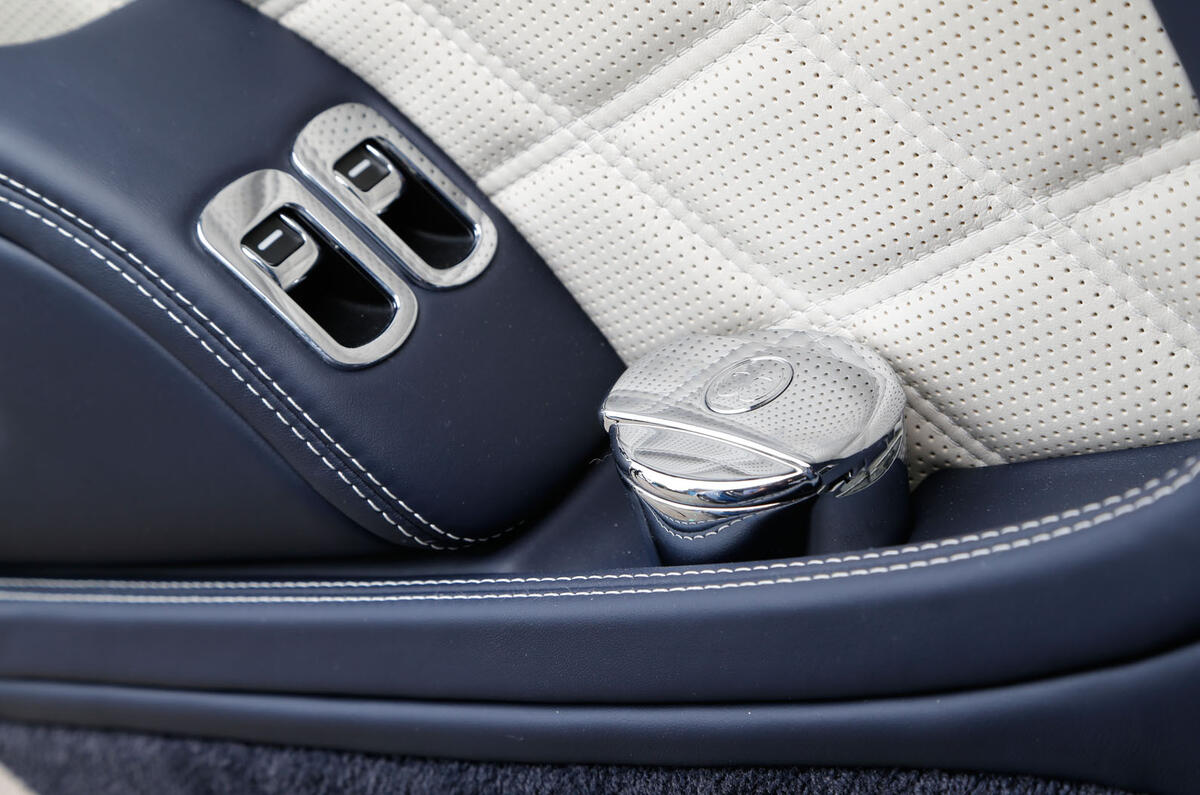





















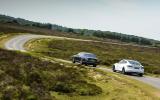

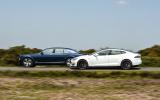


















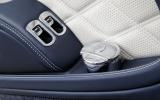








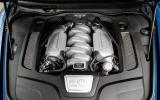















Join the debate
Add your comment
Greatly exaggerated reports
New clothes for the old Emperor
Or Rolls Royce, perhaps... in 2011
Hi Michael! I thought this idea rang a bell. Cast mind back to 2011 when Rolls Royce were toying with the idea with their 102EX Phantom Experimental Electric, with a 71kWh battery instead of sir usual powertrain. It was produced for a global tour with the idea of getting feedback from "owners, VIPs, media, and enthusiasts". Autocar ran an article on it, interesting read.
No doubt Bentley will